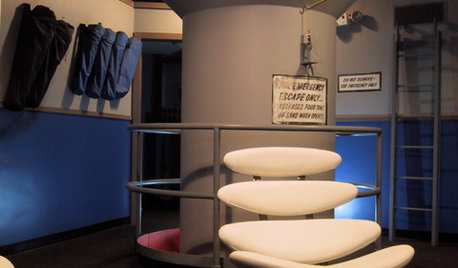Interesting news from a free newsletter I subscribe to.
Martin Weiss & Co. have been making predictions about this since 2004. I have no recommendations of my own, but thought others might be curious to know what the FDIC is up to these days.
February 29, 2008
Banking Crisis Entering a New Stage?
by Mike Larson
I'm going to cut to the chase here: The U.S. financial industry is facing unprecedented challenges. Unlike past crises, which tended to be isolated in one or two parts of the credit market, this one is different ...
We are seeing major credit problems popping up in everything from residential mortgages to commercial mortgages to leveraged buyout loans to credit cards to auto loans. (And I'm probably forgetting a few!)
This is having a widespread impact on the entire banking sector. For proof, look no further than the Federal Deposit Insurance Corp.'s latest Quarterly Banking Profile.
This report, which comes out every three months, always has a treasure trove of information on the banking industry.
Let me share just a few of its more colorful headlines ...
"Quarterly Net Income Declines to a 16-Year Low"
"Noncurrent Rate on Mortgage Loans Reaches New High"
"Net Charge-Off Rate Rises to Five-Year High"
"Three Failures in 2007 Is Most Since 2004"
Are you seeing a pattern here? I mean, this is not light, airy reading for a day at the beach.
It's a major red-flag warning coming straight from one of the top banking regulatory agencies in this country!
And once you dig into the nitty-gritty of the report, you see things look even worse. A few choice tidbits:
* In the fourth quarter, aggregate profits at the 8,533 institutions the FDIC tracks slipped to $5.8 billion. That was a drop of more than 83% from a year earlier, and the lowest absolute level of net income since the fourth quarter of 1991.
* Return on assets �" a key measure of how much profit banks are generating from their assets (loans, securities, etc.) �" plunged to 0.18% in the quarter, driven by problems at a few of the nation's largest institutions. That was down from 1.2% a year earlier and the worst performance since 1990.
* Provisions for loan losses �" money banks add to their loss reserves when they expect credit performance to sour �" soared to $31.3 billion in the fourth quarter. That's the highest level in any quarter ... EVER ... and more than triple what we saw in the same period of 2006.
* Net charge-offs �" the hit banks take when they determine that nonperforming loans are essentially a lost cause (adjusted for recoveries on previously charged off loans) �" surged to $16.2 billion from $8.5 billion a year earlier.
* And again, it wasn't just one category of loans. Charge-offs rose 33% in credit cards ... 58% in the other loans to individuals ... 105% in the commercial and industrial loan category ... and 144% in the residential mortgage business. And there's every indication to believe charge offs will continue rising for the foreseeable future.
You know what I see in all this?
More Shades of the
Savings & Loan Crisis
Back in November, I penned a piece called "The New Savings and Loan Crisis." As I said then:
"Indeed, [the nation's largest banks and top investment firms] are facing the biggest credit meltdown since the Savings and Loan Crisis of the late 1980s and early 1990s!"
Since that time, I've done even more work on the parallels (and differences) between what happened in the S&L crisis and what's happening now. That includes reviewing several essays in a book called The Savings and Loan Crisis: Lessons from a Regulatory Failure.
I don't see any sign of a bottom in housing, and that means more trouble for financial firms.
Here's my current thinking ...
Interest rate gyrations in the late 1970s and early 80s greatly eroded the capital of the entire S&L industry. Lenders made long-term, fixed-rate loans and funded them with short-term borrowings.
When short-term rates rose, their funding costs increased, but they couldn't do anything about those long-term loans. They were stuck holding old mortgages that didn't yield as much as new mortgages ... and the value of those old mortgages plunged.
Legislation then allowed the S&Ls to aggressively expand into new markets, like commercial real estate, in the mid-1980s. The intent was to help the financial firms "earn their way out" of the interest rate problems.
But tax law changes and regional economic downturns struck later in the decade, dealing a death blow to the industry. Failures surged, and we as a country ultimately had to spend around $150 billion cleaning up the mess.
Banks were much better capitalized heading into this crisis than they were back in the S&L days. Yet the lending problems they face are also more widespread, in my judgment. The decline in home prices is unprecedented in modern history too, and that's driving mortgage delinquencies and losses into uncharted territory.
Do I expect as many failures as we saw during the S&L crisis? No. But ...
I Do Expect Some Banks to Go Under,
And So Do the Banking Regulators!
Heck, we're already seeing the number of "problem institutions" flagged by the FDIC rise. It climbed to 76 in the fourth quarter of 2007 from 65 a quarter earlier and just 50 at the end of 2006. Problem banks are those with "financial, operational, or managerial weaknesses that threaten their continued financial viability," in the words of the FDIC.
Regulators can see the writing on the wall. So I also wasn't surprised to see the Wall Street Journal run a story this week headlined "FDIC to Add Staff as Bank Failures Loom." It said:
"The Federal Deposit Insurance Corp. is taking steps to brace for an increase in failed financial institutions as the nation's housing and credit markets continue to worsen.
"The FDIC is looking to bring back 25 retirees from its division of resolutions and receiverships. Many of these agency veterans likely worked for the FDIC during the late 1980s and early 1990s, when more than 1,000 financial institutions failed amid the savings-and-loan crisis.
"FDIC spokesman Andrew Gray said the agency was looking to bulk up 'for preparedness purposes.' The division now has 223 employees, mostly based in Dallas.
"The agency, which insures accounts at more than 8,000 financial institutions, is also seeking to hire an outside firm that would help manage mortgages and other assets at insolvent banks, according to a newspaper advertisement."
Bottom line: When it comes to the financial sector, I'll repeat what I've been telling you for months:
Bargain hunting in the housing and financial stocks still looks like a high-risk, suckers' game to me!
There is NO evidence I can see that a definitive "bottom" for housing is in. The magnitude of the credit challenges facing the financial industry is enormous. And the potential for outright bank failures to roil market confidence in the coming months is high.
So I think you're better off staying away, keeping your money safe, and taking advantage of the massive profit opportunities elsewhere.
Until next time,
Mike
Attention editors and publishers! Money and Markets issues can be republished. Republished issues MUST include attribution of the author(s) and the following short paragraph:
This investment news is brought to you by Money and Markets. Money and Markets is a free daily investment newsletter from Martin D. Weiss and Weiss Research analysts offering the latest investing news and financial insights for the stock market, including tips and advice on investing in gold, energy and oil. Dr. Weiss is a leader in the fields of investing, interest rates, financial safety and economic forecasting. To view archives or subscribe, visit http://www.moneyandmarkets.com.













green-zeus
3katz4me
Related Discussions
Are Banks healthy (and safe) now?
Q
Who's to Blame for the Mortgage Mess? Banks, Not Homeowners
Q
Help please with staging house for pro pics - images included
Q
Sanctions sought for Countrywide Financial
Q
deerslayer
oakleif
joyfulguy